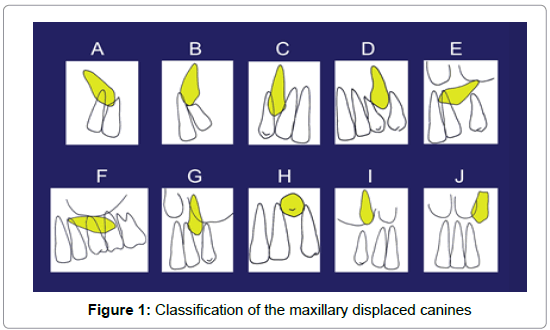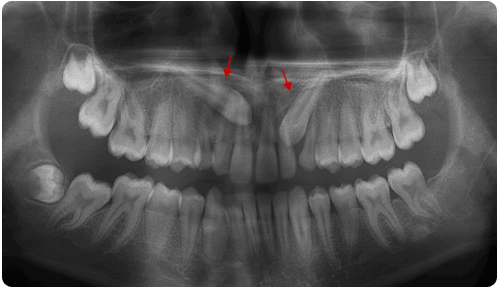Impacted Canine Tooth
 The upper jaw canine is the second most common tooth to become impacted.
The upper jaw canine is the second most common tooth to become impacted.
The canine tooth is a critical tooth in the dental arch and plays an important role in guiding the rest of the teeth into proper bite.
The canine teeth are very strong biting teeth and form the foundation for esthetic smile.
 • Inclined or malposed front teeth
• Inclined or malposed front teeth
• Migration of adjacent teeth
• Pain or tenderness of the gums or jaw bone.
 If a canine tooth gets impacted, every effort is made to get it to erupt into its proper position in the dental arch.
If a canine tooth gets impacted, every effort is made to get it to erupt into its proper position in the dental arch.
Any extra teeth blocking eruption of the adult teeth are removed. If the eruption path is cleared and the space is opened up by age 11-12, there is a good chance the impacted canine will erupt itself or with the help of braces.
If the canine is allowed to develop too much (age 13-14), the impacted canine will not erupt by itself even with the space cleared for its eruption.
If the patient is too old (over 40), there is a much higher chance the tooth will be fused in position. In these cases the tooth will not budge with surgical exposure of tooth or tooth repositioning with braces. The only option is to surgically remove the impacted tooth under local anaesthesia and consider an alternate treatment to replace it in the dental arch with crown or a dental implant or a fixed bridge.
 It is recommended that a screening x-ray, along with a dental examination, be performed on all dental patients at around the 7 yrs of to determine if there are problems with eruption of the adult teeth.
It is recommended that a screening x-ray, along with a dental examination, be performed on all dental patients at around the 7 yrs of to determine if there are problems with eruption of the adult teeth.
With early detection, timely interception treatment and well-managed surgical and orthodontic treatment, impacted canines can be allowed to erupt and be guided to an appropriate location in the dental arch.
